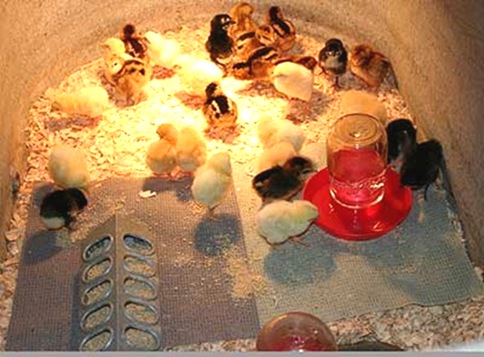Poultry-Layers-Broilers
LAYERS – BROILERS IN POULTRY
Generally, two types of chicken are grown in poultry farming. They are layers and broilers. The layers are grown only to lay eggs, whereas the broilers are grown for flesh. More or less, both layers and broilers require similar type of equipment and facilities.
The growth and economy of any poultry farm depends totally on the type of breeds and the management efficiencies. A variety of high yielding layers and broilers are available. These varieties are produced by the process of hybridization.
The baby chicks of high quality in layers and broilers are produced by hatcheries. For poultry farming, the new born chicks are to be obtained. These one day old chicks are to be subjected for brooding.
Brooding is the care and management exerted in the first few weeks after hatching (40 to 60 days). The artificial brooding is employed for this purpose. The artificial brooding is the method of handling chicks without the aid of mother hen. In this process, the farm houses and cages should be made ready for the baby chicks. The surroundings of the house and the equipment should be kept clean by using insecticides.


Poultry farming -Layers
The born chicks e newly are to be kept in brooders or brooding hovers. Brooders have l0 x 12 feet or 12 x 12 feet dimensions and accommodate 250 young chicks. Brooder generates heat (90° - 95°F) from the bulbs arranged in them. The temperature in the first week is to be maintained t 90-95°F. A temperature of 5° F is to be reduced for every week. The temperature in fourth week is at 75- 85°F. In some instances, infra-red bulbs are also used for brooding. In the absence of electricity, the fuel such as kerosene and gas are used to generate the heat. Temperature should be uniform for brooding purpose. At high temperature, the young chicks move away from the brooder and they get congregated at low temperatures.
An iron or bamboo mesh is normally used to protect the brooder. This mesh is named as chick guard. The chick guard keeps the young chick together in the brooder. Chick guard covers an area of 3 feet around the brooder and it is 2 feet above the ground level. The brooders are kept in brooding hover for five weeks.

The broods are to be fed initially with wheat or corn granules. This food is given in the first 3 days. In the first two weeks the immunity of the birds is very less and effected with diseases like Coccidiasis and Fowl pox. Coccidiasis is treated by giving coccidiostats, Amprosol and cardinal drugs, Fowl pox is treated by giving vaccination.
The layers are to be given a special diet from the third day onwards. This food is named as chick mash. It is constituted by 20% proteins and has a high calorific value. The mash is to be given along with water in the first few weeks. Dry mash can be given subsequently. The mash should be given for every two hours to the young chicks.
Water is to be supplied 3 to 4 times a day. The temperature maintained in the brooders is to be decreased gradually per every week. As a result, only 75° - 80°F temperature persists in brooders. From 9th week onwards, the lights may be reduced in the poultry. For a few days, zero watt bulbs are used to maintain light. The young chicken are subjected to debeaking on 21st. day. The chicks grown for about twenty weeks are called growers. The growers are to be fed with grower mash or grower ration.

The young chicks grown in brooders should belong to the same age group. These chicks in the first few weeks are easily susceptible for fowl pox. Hence, they are to be treated properly.
The chicks aged 14 - 15 weeks usually suffer from the parasites such as round worm and tape worm. They are to be treated with anti-helminthes medicines. As a result of this treatment, the worms in the alimentary canal die and come out along with faeces. This is called deworming. The deworming is to be done for every 5 - 6 weeks.
The young chicks involve in cannibalism. This cannibalism can be prevented by debeaking which could be taken up once again at the age of 17 or 18 weeks.
The chicken at the age of 18 to 22 weeks start egg laying. At this stage, they are given a diet referred to as layer mash. The chicken at this stage are to be transferred into the cages. Four or five chicken may be kept in a cage.

Broilers
These are the birds grown for meat purpose. The poultry house and equipment required to grow broilers are much similar to that of layers. A broiler needs 1 square foot area in the farm house. The young chicks brought from hatcheries are to be kept in brooders. The brooding time in broilers vary with season. In summer, they require only 2 weeks, whereas in winter they need brooding for about one month. After one month chick guards can be removed. During night time sufficient lights should be established.
After one month the male and female are to be separated and reared separately.
The food given to broilers up to 42 days is called broiler starter mash. It contains 25% of proteins. From 7th week onwards, each broiler weighs 1 -1.5 kgs. and get ready for marketing purpose. The food given to broilers from 7th week onwards is called broiler finish mash. It co ins more carbohydrates and less proteins. In broilers the wieght of male or cock is higher than female or hen. previous topic:poultry-housing
